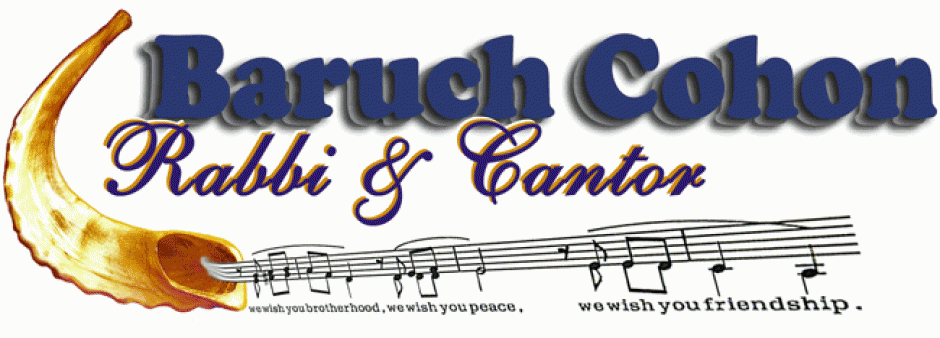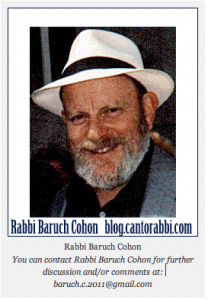A DO-IT-YOURSELF SHRINE – Sedrot Vayak’hel & Pikudey Ex.35-40 – by Rabbi Baruch Cohon
This is a special week in the cycle of the Jewish year. All right, so every week is special. So what’s so special this week?
For one thing, this Saturday will be Shabat M’vorkhim – the Sabbath when we bless the month of Nisan, the month of freedom, which begins in just one more week. We look forward to the month that includes Passover and celebrates Israel’s freedom from Egyptian slavery. Also we will have a double Torah reading, to complete the Book of Exodus which tells the story of that liberation and of Israel’s hard won nationhood. As at the end of every book of the Torah, we will repeat the call: Khazak khazak v’nit-khazek – Be strong, be strong and let’s strengthen each other!
An added special reading distinguishes this week as Shabat Parah, literally “the Sabbath of the cow.” What’s that about? It identifies an additional reading which describes a particularly mysterious ceremony. Ritual purity is a condition that our Torah requires of every Jew. Normal living can preserve that condition, but tum’ah – contamination – can result from unplanned events, like contact with a snake, or touching a dead body. How to remove this contamination? The additional reading for this week tells us about the ceremony of the Red Heifer, where this select breed of cattle was slaughtered and burned to ashes, while cedar branches and hyssop and scarlet were thrown on the fire. Then the aromatic ashes were soaked in fresh water and the elders sprinkled the wet ashes on the contaminated Jew. What makes this strange ceremony particularly mystifying is the ruling that says the elders who do the sprinkling become contaminated! So the net result is that this process “purifies the contaminated, and contaminates the pure.”
The Hertz commentary draws a parallel between this physical impurity and the effect on the personality of those “who help others to self-sacrifice and holiness, and not infrequently themselves become hard and self-centered.”
Maimonides notes that tradition calls for the repetition of this reading on the Sabbath just before the special reading for next week, Hakhodesh hazeh lakhem rosh khadashim – “This month shall be the beginning of months for you”, announcing the Jewish people’s redemption and freedom. So the themes of purity and redemption are linked. In the special Haftorah for this week, the prophet Ezekiel reminds his people of their bloodshed and idolatry that defiled the Land of Israel and led to their exile. Then he predicts their redemption and return. Other nations will see what with G-d’s help the returnees will do to their country, and they will say: “This desolate land has become like the Garden of Eden!”
Today’s returnees can rightly boast of scientific redemption. What they might need to do is acknowledge some Divine inspiration. This week’s regular reading calls on us to honor the spiritual “purification” that brought us out of ancient trials, from slavery and suffering to an independent homeland.
In these, its last chapters, the book of Exodus describes a real artistic explosion, as all the talents of these ex-slaves get mobilized to build the first Jewish house of prayer, the Tabernacle in the desert. First Moses calls on one man he knows can design and build such a portable structure, Betzalel of the tribe of Judah. Besides being a skilled craftsman who understands construction using precious metals, wood, stone and cloth, Betzalel and his assistant, Oholiav of the tribe of Dan, have a talent for teaching. So they can guide others to execute what they design.
Then Moses calls for contributions. Pass the word through the camp that everyone should bring whatever they can donate of those construction materials, plus oil for the lamps, to prepare for this sacred task. And he reminds them that no work, even for this holy purpose, is to be done on the Sabbath.
So we find out that people responded with spirit and ability – an ability that is called khokhmat lev – “the wisdom of the heart.” Men carved, women sewed. The princes among them brought gems for the high priest’s vestments. Organized under Betzalel’s leadership, the contributions poured in.
In fact, they got more than they needed. Moses had to send cryers through the camp, proclaiming: “Let no man or woman do any more work on the holy offerings.” Rabbis and synagogue presidents always shake their heads over that line. One time in history a building campaign was oversubscribed!
Really, why could they do it? Why can’t we? The Torah goes into great detail about all that Betzalel and his men did with the contributions for the Tabernacle. All the beautiful furnishings they built, the ark and the altars and the ten curtains with the poles that held them as this portable shrine got carried through the desert – all constructed from the donations of common people.
Maybe there is a message in that experience that makes this reading even more special. They could oversubscribe because they were doing it themselves. This was not Betzalel’s tabernacle. Not even Moses’ tabernacle. This was ours. This belonged to the entire community. Maybe we can still accomplish such an outpouring of shared work. All we need is a little khokhmat lev. Just some “wisdom of the heart.”



